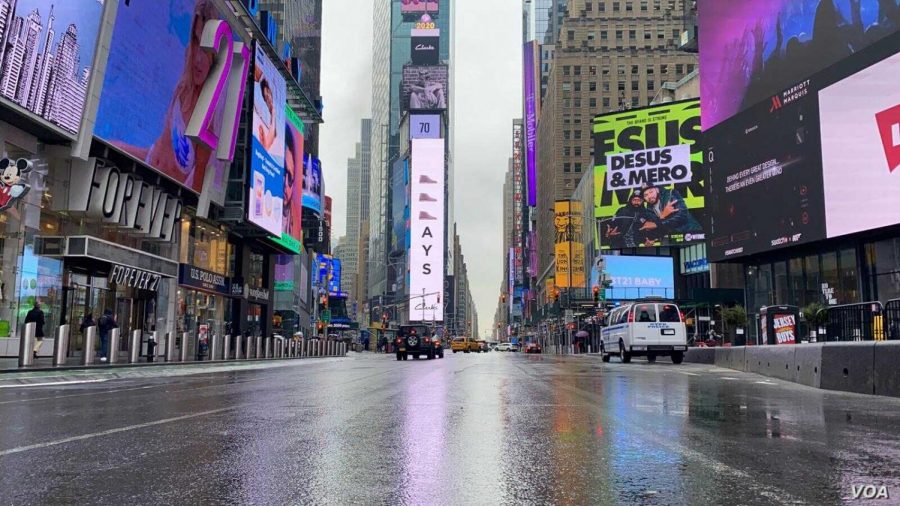How the World Stopped For the Coronavirus
An eerily deserted New York serves as a reminder of how the world has come to a halt in response to the coronavirus.
March 30, 2020
On December 31 of last year, China reported its first cases of the novel coronavirus in its Wuhan province. In the following months, the coronavirus, later officially renamed to COVID-19, spread across the world, stopping everything in its path.
COVID-19 has spread to 214 countries and territories, according to CNN, leaving almost no country spared from its disastrous health and economic effects. While each country adopted different approaches to controlling the spread of the disease, they all have issued similar orders of social distancing and stay-at-home decrees. China, the first country to experience the COVID-19 outbreak, enforced its strict stay-at-home order with door-to-door health checks and drones which discouraged those who ventured outside, according to CNN. In Italy, the entire country was forced to undergo lockdown after reporting the then-highest count of affected individuals. Travel in and out of the country’s borders was prohibited, and citizens only left their homes for the most essential tasks.
The United States has implemented less strict–and also less effective–policies of closing non-essential businesses and schools while encouraging but not mandating social distancing, staying at home, or simply wearing facemasks. No matter the approach of the country, however, all have been forced to put a hold on normal day-to-day activities in response to the deadly virus.
COVID-19 has caused a unique number of circumstances and closures of events, many of which are for the first time in their histories. The most prominent effect of the coronavirus is the delay of the 2020 Summer Olympics, which was scheduled to take place in Tokyo, Japan. On March 24, the International Olympic Committee stated that the Olympics would be “rescheduled to a date beyond 2020 but not later than summer 2021,” marking the first time in history that the Olympics was postponed.
According to Insider, the NBA season was also suspended on March 12, followed by MLB, NHL, and NCAA, along with many other sporting events and seasons. Hollywood has experienced a shut-down as well, with all TV shows and movies halting production, according to Deadline. The premieres of many anticipated movies, including Disney’s live-action Mulan and Marvel’s Black Widow, were also postponed, with other movies being released directly to streaming services.
In another remarkable moment in history, Disneyland, Disneyworld, and all Disney theme parks closed on March 16. For Disneyland, this is only its third closure in its 65-year history. Sierra Lane (12), a frequent visitor of Disneyland, expressed how “scary it is that Disneyland closed. That’s how you know things are serious, and they are.”
More local effects of the coronavirus can be seen in the closed universities throughout the country, which were the first educational institutions to be affected by COVID-19. Public schools closed shortly thereafter. PYLUSD closed its schools on March 13, days after the World Health Organization declared COVID-19 to be a pandemic, with no indication of reopening in the foreseeable future.
Although the policies per state and country vary, non-essential businesses have also been closed, leaving primarily grocery stores open. Students and adults alike have been forced to adapt to new online measures to learn and work, giving rise to online platforms such as Zoom and Google Classroom.
No matter how significant or small the effects, the entire world faces a seemingly screeching halt to normalcy as it waits for the coronavirus to pass. Between eerie photos of a never-before deserted New York and an empty Los Angeles highway, it is clear that the world has shut down in response to the COVID-19 pandemic, and necessarily so–only through social distancing, self-quarantining, and extremely cautionary measures will the world be able to recover from the virus.






















faith desio • Nov 2, 2020 at 10:04 AM
It is such a shame how many things are still deeply impacted by Covid 19. It still does feel like the world is stopped! I can’t wait to get back to normal eventually!